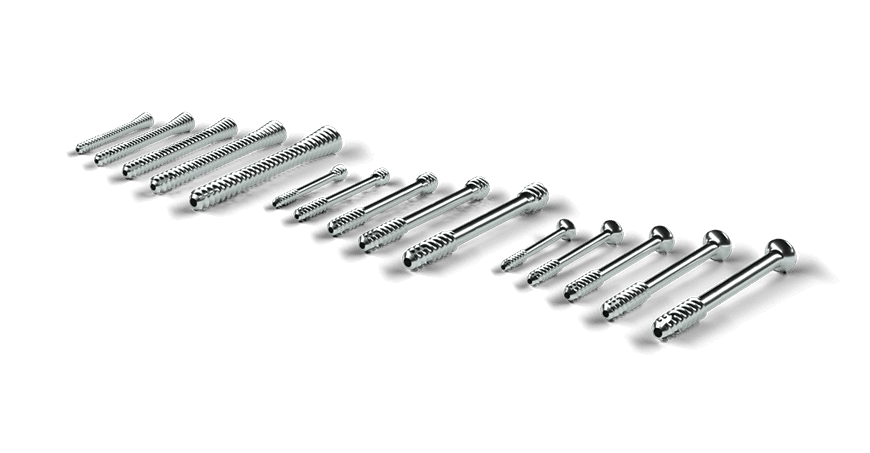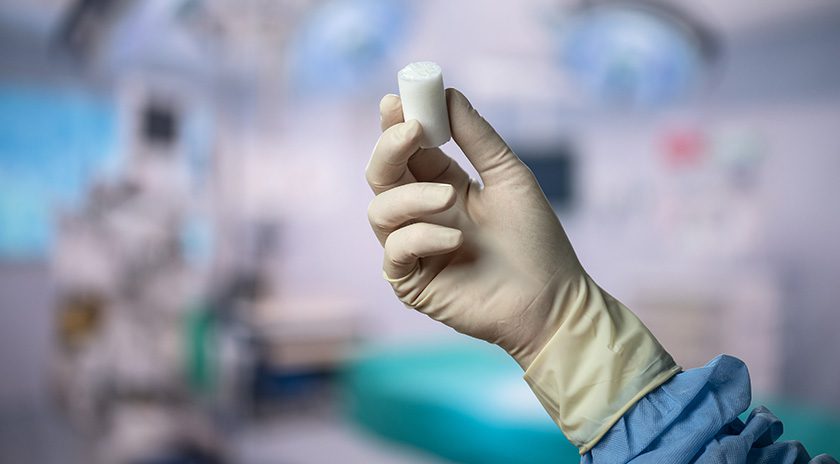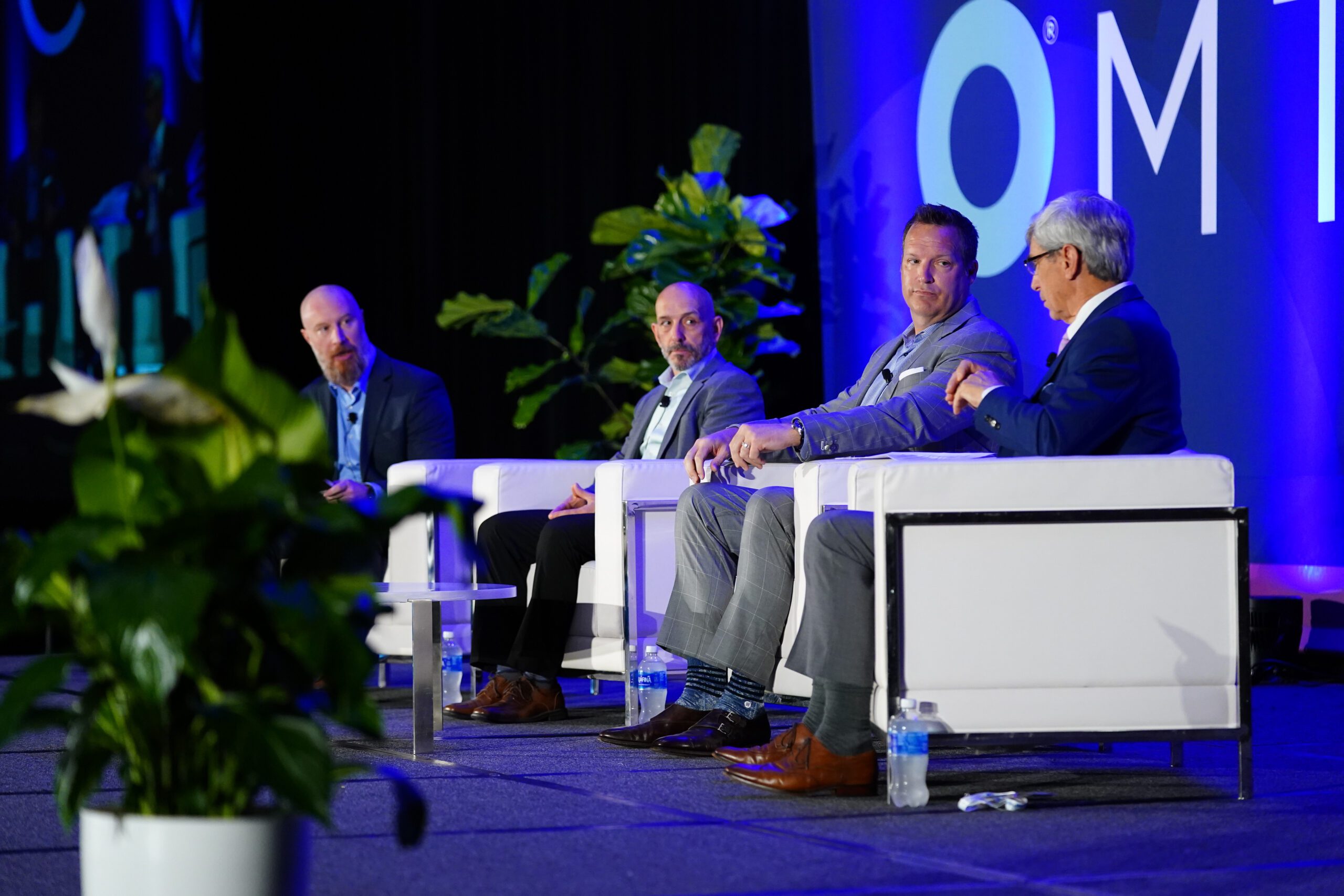
 Copy to clipboard
Copy to clipboard 
For several years foot and ankle got most of the attention in trauma, given its rapid growth rate and highly-fragmented nature. Recently, core trauma has reemerged as a significant opportunity for orthopedic players.
Stryker has stood at the forefront of the resurgence of core trauma. We spoke with Eric Tamweber, Stryker’s Vice President and General Manager of Trauma, about the company’s high-performing culture and opportunities for innovation. Excerpts from our conversation follow, edited for clarity and length.
Stryker’s core trauma growth has tracked off the charts. What is it about the market over these last few years that has driven that kind of growth?
Mr. Tamweber: I’m not sure it’s the market, because the markets have been growing the same. I think it’s our focus and intense domain experience. I’ve been in trauma for 25 years. I’ve had every position within the organization. I understand the segment and our customers, and Stryker empowers me to make decisions for the business.
Stryker’s business units are fiercely decentralized, but they follow the high expectations set by leadership. When I started in the [former President and CEO] John Brown days, we posted 20% growth each year. I return to our intense domain experience in this core trauma segment, which allows us to make decisions that are right for our field, right for our customers and ultimately the right decisions for patients who receive our products.
How have the needs of your patients and surgeon partners evolved over that time?
Mr. Tamweber: We always put the patient and the customer first, and we hold true to that mentality. However, our administrative customers are evolving in terms of standardization, hospital consolidation and the shift toward value-based care. Customers are under pressure to improve outcomes and reduce costs, so we have to advance and evolve with them.
With consolidation, customers are shifting procedures to certain hospitals within their umbrella. In the past, they may have sent a case to a competing hospital down the street, but circumstances are changing and so we must be a strategic partner.
We have created our Alliance Trauma Value Program, which provides tools, data and support to our administrative customers. They understand what’s happening in the trauma segment, which is a big segment. Think about purely the number of competitors and the number of SKUs. Stryker trauma has 30,000 SKUs. We empower our customers and give them complete control and understanding of the segment.
What is an area of core trauma that could benefit from innovation or new thinking?
Mr. Tamweber: Enabling technologies. Think about Stryker in general; we’re really good at enabling tech. Look at what we’re doing on the medical side of the business. Look at what we’ve done with Mako or even Blueprint for upper extremity.
Artificial intelligence and digital integration are other areas for growth. We have an amazing opportunity to grow within this segment, and Stryker’s enterprise gives us a really strong foundation.
I think the biggest question for core trauma is, how do we translate it? In trauma’s fast-paced, unpredictable environment, we don’t know what’s showing up in the operating room. We don’t have time to plan for that case; every fracture is different. There could be 1,000 patients who show up and every single one looks different. We’re trying to be a fast follower in the field, and enabling tech will be a huge opportunity for us.
Regarding our core bread and butter innovation, we talk about fit and simplicity. It’s everything you need and nothing you don’t in one system. This is what we’ve achieved with the Pangea Plating System. How do we do that for all our products in the future? How do we manage the number of SKUs? How do we make it easy for all our hospital stakeholders? I think they all matter. Sterile processing, scrub techs, nurses and then supply chain. We built Pangea with all of them in mind.
What advice or lessons learned would you give to yourself as a young orthopedic professional?
Mr. Tamweber: We don’t have enough time to cover all of the lessons learned! It’s been a long run, and I’ve had the opportunity to grow up here. In 2005, Stryker was a company that was shooting for $5 billion as an enterprise. We’re a much bigger organization, and I got to grow and learn with the organization.
I will say that you get what you give. I don’t expect anything from the people in the trauma organization that I wouldn’t expect or haven’t done myself over the years. It goes back to transparency. Alignment is everything. We’re not going to love everything we have to do, but alignment, especially around the leadership table, is very important.
We’re lucky about that with our business unit structure. We’re not in agreement all the time, but we have alignment. The strengths lie in people and talent. If you start focusing on revenue, or start focusing somewhere else, you take your eye off the people and talent. That’s where companies often fall short.
We’re driven to make healthcare better. Our non-negotiables are accountability and people. We start every presentation with that mantra so that we’re all aligned. The 50,000 employees at Stryker are all aligned to one message, which is something extremely powerful that [CEO] Kevin [Lobo] put into play when he came here. It’s easy to get behind, and I don’t ever see it changing.
For several years foot and ankle got most of the attention in trauma, given its rapid growth rate and highly-fragmented nature. Recently, core trauma has reemerged as a significant opportunity for orthopedic players.
Stryker has stood at the forefront of the resurgence of core trauma. We spoke with Eric Tamweber, Stryker’s Vice President...
For several years foot and ankle got most of the attention in trauma, given its rapid growth rate and highly-fragmented nature. Recently, core trauma has reemerged as a significant opportunity for orthopedic players.
Stryker has stood at the forefront of the resurgence of core trauma. We spoke with Eric Tamweber, Stryker’s Vice President and General Manager of Trauma, about the company’s high-performing culture and opportunities for innovation. Excerpts from our conversation follow, edited for clarity and length.
Stryker’s core trauma growth has tracked off the charts. What is it about the market over these last few years that has driven that kind of growth?
Mr. Tamweber: I’m not sure it’s the market, because the markets have been growing the same. I think it’s our focus and intense domain experience. I’ve been in trauma for 25 years. I’ve had every position within the organization. I understand the segment and our customers, and Stryker empowers me to make decisions for the business.
Stryker’s business units are fiercely decentralized, but they follow the high expectations set by leadership. When I started in the [former President and CEO] John Brown days, we posted 20% growth each year. I return to our intense domain experience in this core trauma segment, which allows us to make decisions that are right for our field, right for our customers and ultimately the right decisions for patients who receive our products.
How have the needs of your patients and surgeon partners evolved over that time?
Mr. Tamweber: We always put the patient and the customer first, and we hold true to that mentality. However, our administrative customers are evolving in terms of standardization, hospital consolidation and the shift toward value-based care. Customers are under pressure to improve outcomes and reduce costs, so we have to advance and evolve with them.
With consolidation, customers are shifting procedures to certain hospitals within their umbrella. In the past, they may have sent a case to a competing hospital down the street, but circumstances are changing and so we must be a strategic partner.
We have created our Alliance Trauma Value Program, which provides tools, data and support to our administrative customers. They understand what’s happening in the trauma segment, which is a big segment. Think about purely the number of competitors and the number of SKUs. Stryker trauma has 30,000 SKUs. We empower our customers and give them complete control and understanding of the segment.
What is an area of core trauma that could benefit from innovation or new thinking?
Mr. Tamweber: Enabling technologies. Think about Stryker in general; we’re really good at enabling tech. Look at what we’re doing on the medical side of the business. Look at what we’ve done with Mako or even Blueprint for upper extremity.
Artificial intelligence and digital integration are other areas for growth. We have an amazing opportunity to grow within this segment, and Stryker’s enterprise gives us a really strong foundation.
I think the biggest question for core trauma is, how do we translate it? In trauma’s fast-paced, unpredictable environment, we don’t know what’s showing up in the operating room. We don’t have time to plan for that case; every fracture is different. There could be 1,000 patients who show up and every single one looks different. We’re trying to be a fast follower in the field, and enabling tech will be a huge opportunity for us.
Regarding our core bread and butter innovation, we talk about fit and simplicity. It’s everything you need and nothing you don’t in one system. This is what we’ve achieved with the Pangea Plating System. How do we do that for all our products in the future? How do we manage the number of SKUs? How do we make it easy for all our hospital stakeholders? I think they all matter. Sterile processing, scrub techs, nurses and then supply chain. We built Pangea with all of them in mind.
What advice or lessons learned would you give to yourself as a young orthopedic professional?
Mr. Tamweber: We don’t have enough time to cover all of the lessons learned! It’s been a long run, and I’ve had the opportunity to grow up here. In 2005, Stryker was a company that was shooting for $5 billion as an enterprise. We’re a much bigger organization, and I got to grow and learn with the organization.
I will say that you get what you give. I don’t expect anything from the people in the trauma organization that I wouldn’t expect or haven’t done myself over the years. It goes back to transparency. Alignment is everything. We’re not going to love everything we have to do, but alignment, especially around the leadership table, is very important.
We’re lucky about that with our business unit structure. We’re not in agreement all the time, but we have alignment. The strengths lie in people and talent. If you start focusing on revenue, or start focusing somewhere else, you take your eye off the people and talent. That’s where companies often fall short.
We’re driven to make healthcare better. Our non-negotiables are accountability and people. We start every presentation with that mantra so that we’re all aligned. The 50,000 employees at Stryker are all aligned to one message, which is something extremely powerful that [CEO] Kevin [Lobo] put into play when he came here. It’s easy to get behind, and I don’t ever see it changing.

You are out of free articles for this month
Subscribe as a Guest for $0 and unlock a total of 5 articles per month.
You are out of five articles for this month
Subscribe as an Executive Member for access to unlimited articles, THE ORTHOPAEDIC INDUSTRY ANNUAL REPORT and more.
ME
Mike Evers is a Senior Market Analyst and writer with over 15 years of experience in the medical industry, spanning cardiac rhythm management, ER coding and billing, and orthopedics. He joined ORTHOWORLD in 2018, where he provides market analysis and editorial coverage.







